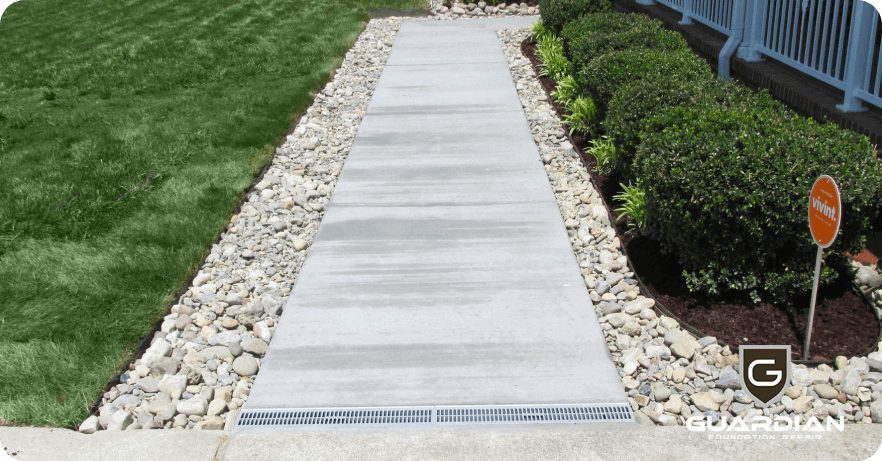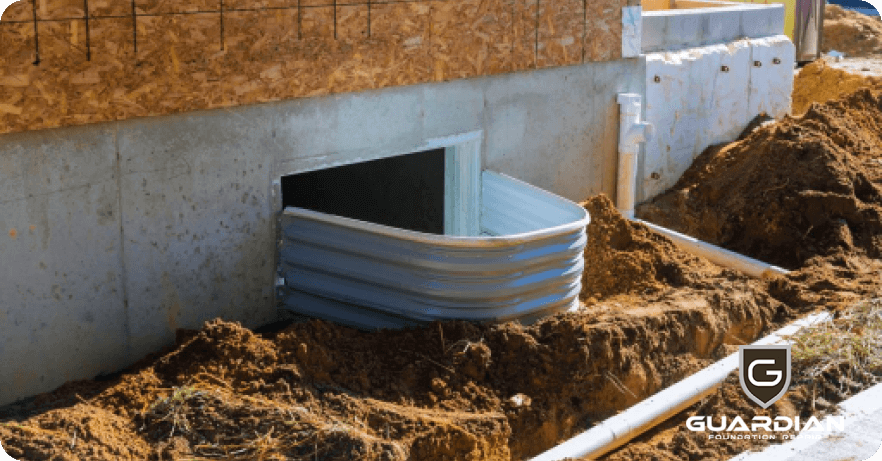Introduction
Your home’s foundation serves as a steadfast support system, ensuring the stability and strength of your entire house. However, even a well-constructed foundation is not impervious to soil erosion hazards, which can significantly impact the structural integrity of your property.
When soil erosion occurs, the foundation becomes susceptible to shifting, leading to a domino effect that can affect walls, ceilings, roofs, and critical systems like plumbing and electricity. Although you can’t control the weather, there are practical steps you can take to prevent soil erosion around your foundation.
In this blog post, we will explore what soil erosion entails, its common causes, and how the expertise of a foundation repair specialist can assist you in fortifying your home against this destabilizing force.
What is Soil Erosion and Its Impact on Your Knoxville Home Foundations?
Soil erosion refers to the gradual wearing away or displacement of soil from the land surface. It is primarily caused by natural elements such as water, wind, and gravity. When heavy rainfall or flooding occurs, the soil around your foundation can be washed away, creating empty spaces and voids beneath the foundation. Similarly, strong winds can carry loose soil particles away, exposing the foundation to damage.
The impact of soil erosion on home foundations is significant. The foundation may shift, settle, or sink unevenly as the soil erodes. This can result in noticeable cracks in your home’s walls, floors, and ceilings. Additionally, doors and windows may become misaligned, making them difficult to open or close properly. The soil erosion can also disrupt the proper drainage of water around the foundation, leading to moisture-related issues like basement flooding and water intrusion.
How Soil Erosion Affects Your Foundation?
As erosion occurs, water can accumulate near the foundation, leading to various problems that can impact your home. Here are some ways in which soil erosion affects your foundation:
- Water Infiltration: As soil erodes and water collects against the foundation, there is an increased risk of water seeping into your basement or crawl space. This can happen through cracks created by soil movement or substandard construction. Signs of water ingress include dampness, mold growth, a musty odor, or visible water pooling on the floor. Basement waterproofing here is crucial to prevent water infiltration and subsequent damage to your foundation.
- Increased Pressure: Accumulated water applies pressure to the foundation walls. While this pressure may dissipate as the water dries, the repeated wetting and drying cycle can cause the foundation to shift and crack. These cracks become pathways for rainwater during future rainfall or flooding events, exacerbating the risk of water damage to your home’s basement or lower levels.
- Foundation Settling: Soil erosion can lead to a compromised foundation, resulting in settling. When the foundation settles unevenly, you may observe cracking in the walls and outside brickwork, uneven floors, and sticking doors and windows. These structural changes indicate potential damage to the foundation.
- Moisture Damage: If water penetrates the foundation, it can travel through the walls and affect the upper floors of your home. Moisture damage can cause the flooring to warp or rot, the baseboards to deteriorate, and the walls to weaken. Signs of moisture damage include damp and spongy carpets, peeling wallpaper, or visible wall stains.
How to Identify Soil Erosion Problem Areas?
The first crucial step in preventing soil erosion around your foundation is identifying the problem areas. Take a leisurely walk around your property, paying close attention to signs of soil erosion. Look for visible indicators such as exposed roots, bare patches of soil, or uneven ground near the foundation. Additionally, observe areas where water accumulates or drains poorly after rainfall. These problem spots are clear signs of potential soil erosion.
Consulting with a reputable foundation contractor is highly recommended to ensure an accurate assessment and effective solutions. With their specialized knowledge and experience, the experts can thoroughly evaluate the severity of erosion and determine its underlying causes. They will carefully analyze whether the soil has already begun to wash away or if there are indications of water pooling near the foundation. Collaborating with a professional from the early stages allows for developing appropriate and tailored solutions to address the problem and prevent further damage.
Stop soil erosion to protect your home’s foundation and prevent costly repairs.
Let our foundation experts help you.
Effective Ways to Prevent Soil Erosion Around Your Home Foundation
To address erosion issues and safeguard your home from water damage and settling problems, foundation repair specialists at Guardian Foundation recommend the following steps:
Install a Surface or French Drain
Surface and French drains are common and effective solutions for addressing drainage issues. Surface drains are designed to remove water pooling on your lawn’s surface, while French drains handle water that has seeped below ground level.
If the soil around your home becomes oversaturated after heavy rainfall, a French drain can help divert excess water away from the foundation walls and prevent damage. On the other hand, if your lawn slopes towards the foundation and consistently accumulates water during rainy weather, a surface drain may be a better choice. Surface drains can quickly clear away large volumes of water, reducing the risk of erosion around the foundation.
Implementing these drainage systems helps redirect water away from the foundation, reducing the likelihood of soil erosion and associated foundation issues.
Correcting the Foundation Grading
One crucial step in preventing soil erosion around your home foundation is ensuring proper grading. It is important to check if the soil surrounding the foundation has a sufficient slope to prevent water from collecting against the wall. A general guideline is to have a ground slope of 3% to 5% for the first 10 feet surrounding the property.
If your property’s layout does not support this recommended slope, regrading the area around the foundation is an effective solution. Regrading involves reshaping the soil to create a gentle slope away from the foundation. One way to do that is to use landscaping timbers to create a border for the new soil. You can also utilize pavers, stones, or other materials to create a decorative border that also aids in erosion control. It is important to ensure that whatever border material you choose is properly secured and will not wash away during heavy rain.
In addition to regrading, there are other options to consider:
- Crawl Space Encapsulation: A tight seal to your crawl space can prevent moisture penetration. Crawl space encapsulation involves covering the exposed ground with a vapor barrier and sealing off any potential entry points for moisture. This helps maintain a dry environment, protect the foundation from moisture-related issues, and boost your home value.
- Install a Rain Garden: A rain garden is a landscaped area designed to collect and absorb rainwater runoff from your property. It consists of native plants and a specially designed soil mixture that promotes water infiltration. Directing rainwater into a rain garden can reduce the amount of water reaching the foundation and minimize soil erosion.
Installing Downspouts and Gutters
Downspouts and gutters collect rainwater as it flows off your roof and direct it away from your home’s foundation. By doing so, they help prevent water damage to the structure of your home and minimize soil erosion.
Ideally, downspouts should be positioned at least five to 10 feet away from the foundation walls. The exact distance may vary depending on the type and condition of the soil. It is advisable to consult a foundation repair contractor who can provide guidance based on your specific circumstances.
Additionally, regular cleaning of gutters and downspouts is essential to ensure their proper functioning. Especially if you live in an area with abundant trees, it is important to clean your gutters more frequently, as leaves and other debris can accumulate and cause blockages. Keeping your gutters clean extends their lifespan and helps maintain effective water drainage.
Plant Trees and Shrubs
Another effective measure to prevent soil erosion around your home foundation is to utilize plants. Certain plants with deep roots can help hold the soil in place and minimize erosion. Consider the following tips when incorporating trees and shrubs into your landscaping:
- Grasses for Erosion Control: Grasses are excellent for preventing soil erosion as they possess shallow, fibrous roots. These roots quickly grow and spread, effectively anchoring the soil. Consider planting grasses in areas prone to erosion, such as slopes or bare patches. They can help stabilize the soil and prevent erosion by absorbing water and reducing surface runoff.
- Strategic Tree Planting: When planting trees near your home, it is essential to ensure they are at a safe distance to prevent potential foundation damage. Plant trees at least 20 feet away from your house to avoid any interference with the foundation. Trees have deep and wide-reaching roots, which make them ideal for holding soil in place and preventing erosion. Their extensive root systems help stabilize the soil, reducing the risk of erosion around the foundation.
- Native Shrubs for Soil Stabilization: Shrubs with deep roots can also contribute to soil stabilization and erosion control. Look for native shrub species in your area, which are well-adapted to the local climate and soil conditions. Native shrubs have developed strong root systems to withstand natural elements and can help prevent soil erosion effectively.
Guardian Foundation Repair – Your Trusted Expert for Foundation Repair in Knoxville
Soil erosion around your home’s foundation can cause significant problems, including cracks and leaks. If you live in an area with heavy rainfall, the risk of soil erosion becomes even greater. It’s crucial to be proactive in preventing soil erosion, but if it happens, prompt action is necessary to avoid further damage, protect your loved ones, and prevent expensive repairs.
At Guardian Foundation Repair, we address erosion issues and provide effective solutions. Our experienced team can install French or surface drains to combat soil erosion. We also offer thorough inspections of your foundation and provide free, no-obligation estimates for any required issues.
Our foundation repair services may include the installation of helical piers, push piers, carbon fiber wall supports, or crawl space repair, all tailored to your foundation’s specific needs.
Contact us today for a consultation and take the necessary steps to safeguard your home’s foundation.


